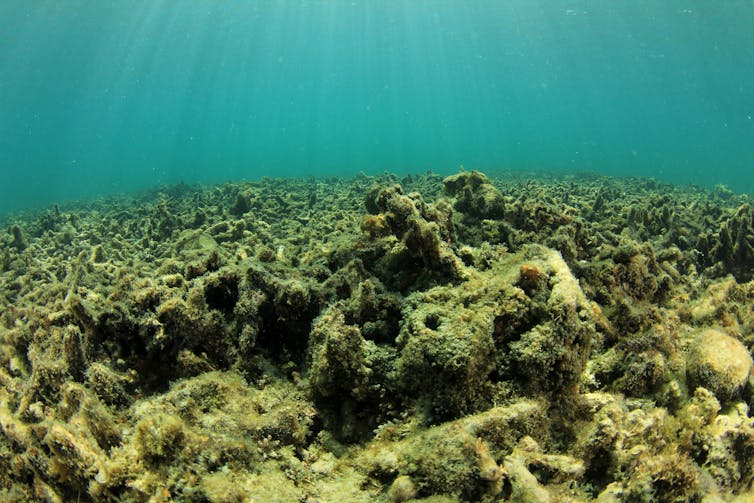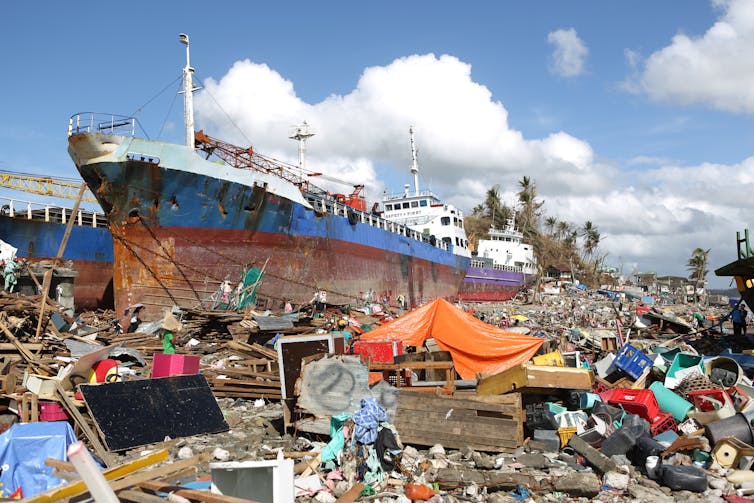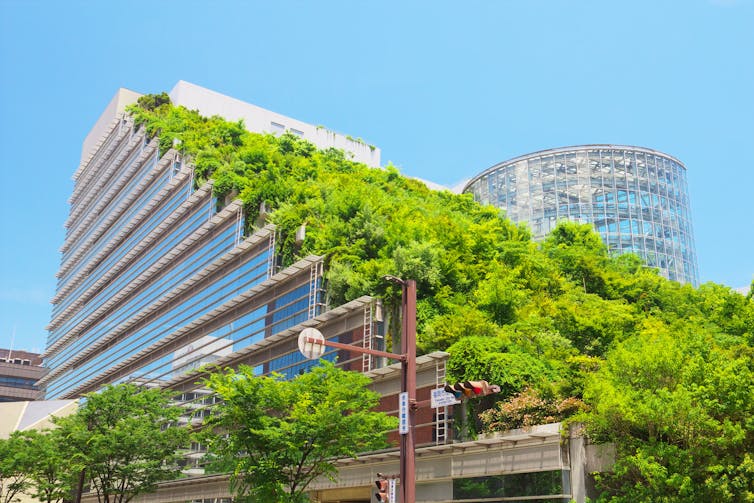What Will Happen If Climate Change Continues
The climate crunch is no longer a looming threat – people are now living with the consequences of centuries of greenhouse gas emissions. Just there is nonetheless everything to fight for. How the world chooses to respond in the coming years will have massive repercussions for generations yet to be born.
In my book How to Salve Our Planet, I imagine two different visions of the future. I in which nosotros do very piddling to address climatic change, and one in which nosotros do everything possible.
This is what the science suggests those very different realities could look like.
Year 2100: the nightmare scenario
The 21st century draws to a shut without action having been taken to prevent climate change. Global temperatures have risen past over four°C. In many countries, summer temperatures persistently stay higher up twoscore°C. Heatwaves with temperatures as high equally 50°C have become common in tropical countries.
Every summer, wildfires rage across every continent except Antarctica, creating plumes of acid fume that make breathing outdoors unbearable, causing an annual health crunch.
Ocean temperatures take risen dramatically. Later repeated bleaching events, Australia's Great Barrier Reef has been officially declared expressionless.

Frequent and prolonged droughts torment vast swathes of the Earth's land. The deserts of the world have expanded, displacing many millions of people. Around iii.v billion live in areas where water demand exceeds what'due south available.
Air pollution has a new major crusade exterior the traffic-choked cities: dust whipped up from at present-barren farmland.
The Arctic is free of body of water ice every summer. Boilerplate temperatures in the far north have risen by over viii°C equally a outcome. The Greenland and Western Antarctic ice sheets take started to melt, releasing a huge corporeality of freshwater into the oceans.
Most mountain glaciers have completely melted. Skiing is at present a predominantly indoor sport which takes place on behemothic artificial slopes. Most of the Himalayan plateau's ice has disappeared, reducing the flows of the Indus, Ganges, Brahmaputra and Yamuna rivers which over 600 1000000 people rely on for plentiful water.
The extra rut in the ocean has caused information technology to expand. Combined with water from melting water ice sheets, bounding main levels have risen by more than than one metre. Many major cities, including Hong Kong, Rio de Janeiro and Miami, are already flooded and uninhabitable. The Maldives, the Marshall islands, Tuvalu and many other small island nations have been abandoned.
Many littoral and river areas are regularly flooded, including the Nile Delta, the Rhine valley and Thailand. Over xx% of Bangladesh is permanently nether h2o.
Winter storms are more energetic and unleash more water, causing widespread wind damage and flooding each year.
Tropical cyclones have go stronger and affect tens of millions of people every yr. Mega-cyclones, similar 2013's Draft Haiyan, have become more common, with sustained wind speeds of over 200 mph.

Southward-east Asian monsoons have go more than intense and unpredictable, bringing either too much or as well piffling rain to each region, affecting the lives of over three billion people.
Food and water insecurity has increased effectually the world, threatening the health and wellbeing of billions of people. Farthermost heat and humidity in the torrid zone and subtropics has increased the number of days that information technology is impossible to work outside tenfold – slashing farm productivity. Extreme weather condition in temperate regions like Europe has made food production highly unpredictable. Half of the land devoted to agriculture in the by is at present unusable, and the chapters of the balance to grow food differs widely from season to flavor. Ingather yields are at their everyman levels since the middle of the 20th century.
Fish stocks have collapsed. The acidity of the ocean has increased by 125%. The ocean food chain has collapsed in some regions equally the small marine organisms that form its base struggle to make calcium carbonate shells and and so survive in the more acidic waters.
Despite advances in medical sciences, deaths from tuberculosis, malaria, cholera, diarrhoea and respiratory illnesses are at their highest levels in human being history. Farthermost atmospheric condition events – from heat waves and droughts to storms and floods – are causing big loss of life and leaving millions of people homeless. Disease epidemics take plagued the century, spreading among populations beleaguered by widespread poverty and vulnerability.
Year 2100: humanity rises to the challenge
This is what our planet could look similar if we do everything in our power to contain climate change.
Global temperatures rose to 1.5°C by 2050 and remained there for the residue of the century. Fossil fuels have been replaced past renewable energy. Over a trillion copse have been planted, sucking carbon dioxide from the temper. The air is cleaner than it has been since before the industrial revolution.
Cities have been restructured to provide all-electric public transport and vibrant green spaces. Many new buildings have a photoelectric skin which generates solar energy and greenish roofs which cool the cities, making them a more pleasant place to live. Loftier-speed electrical trains reaching 300 mph link many of the world'south major cities. Intercontinental flights nonetheless run, using big and efficient planes running on synthetic kerosene that's made by combining water and carbon dioxide sucked direct from the atmosphere.

Global diets take shifted abroad from meat. Farming efficiency has profoundly improved during the transition from industrial-scale meat production to plant-based sustenance, creating more land to rewild and reforest.
Half of the World is defended to restoring the natural biosphere and its ecological services. Elsewhere, fusion free energy is finally prepare to work at scale providing unlimited clean energy for the people of the 22nd century.
Ii very different futures. The event your children and grandchildren will live with depends on what decisions are fabricated today. Happily, the solutions I propose are win-win, or fifty-fifty win-win-win: they reduce emissions, improve the surroundings and make people healthier and wealthier overall.
This article is based on Mark Maslin'due south latest book, How to Relieve Our Planet: The Facts.
Source: https://theconversation.com/climate-change-how-bad-could-the-future-be-if-we-do-nothing-159665
Posted by: turnerfolearribled.blogspot.com


0 Response to "What Will Happen If Climate Change Continues"
Post a Comment